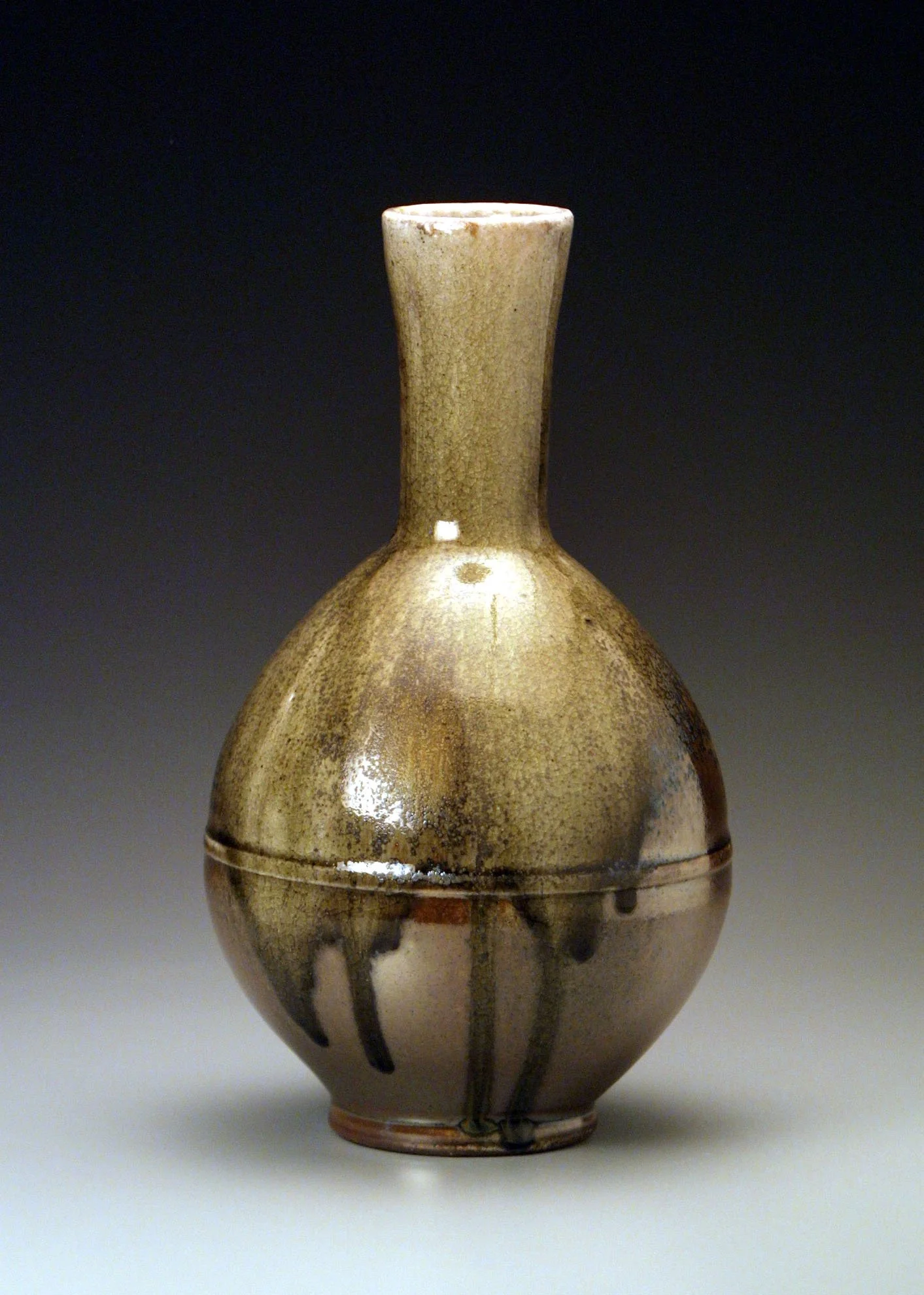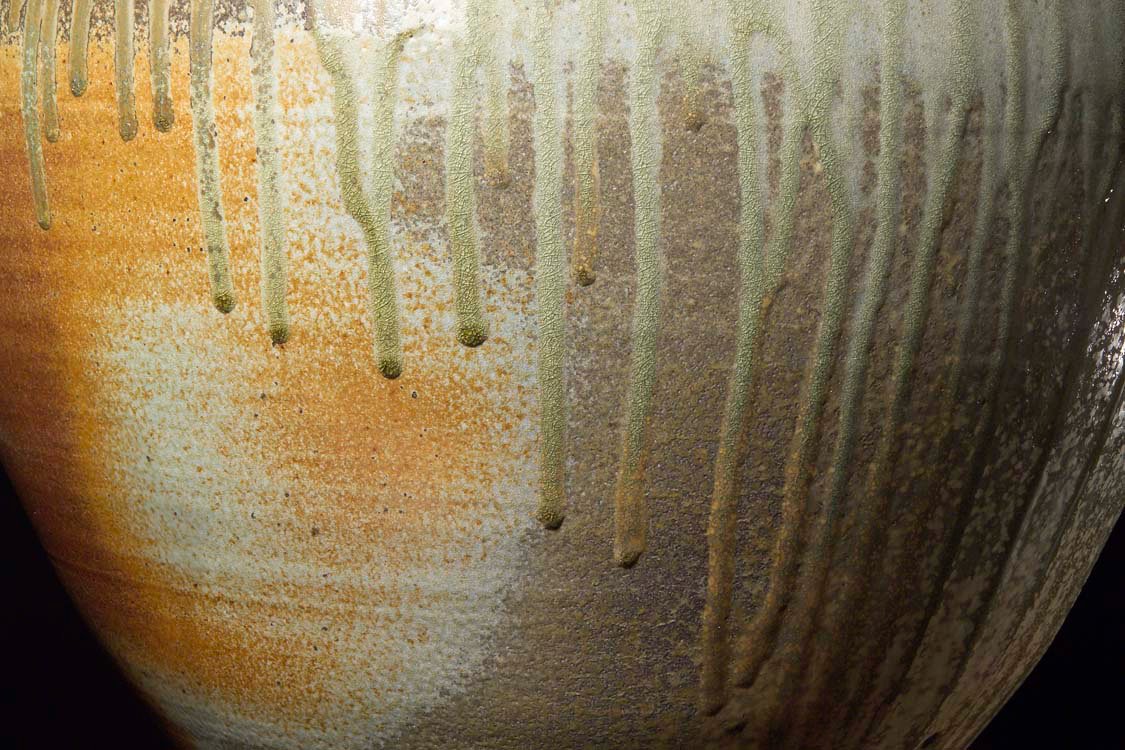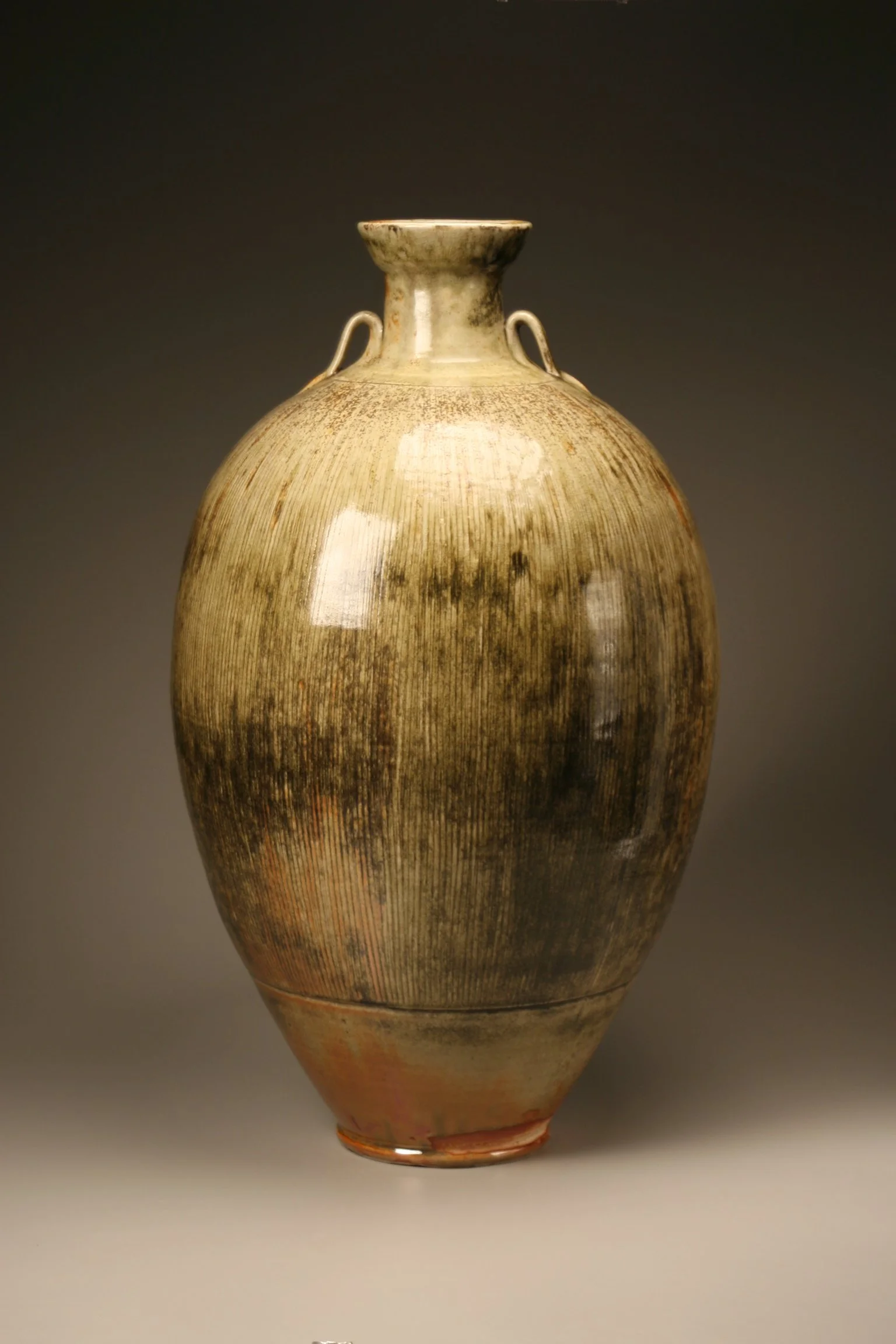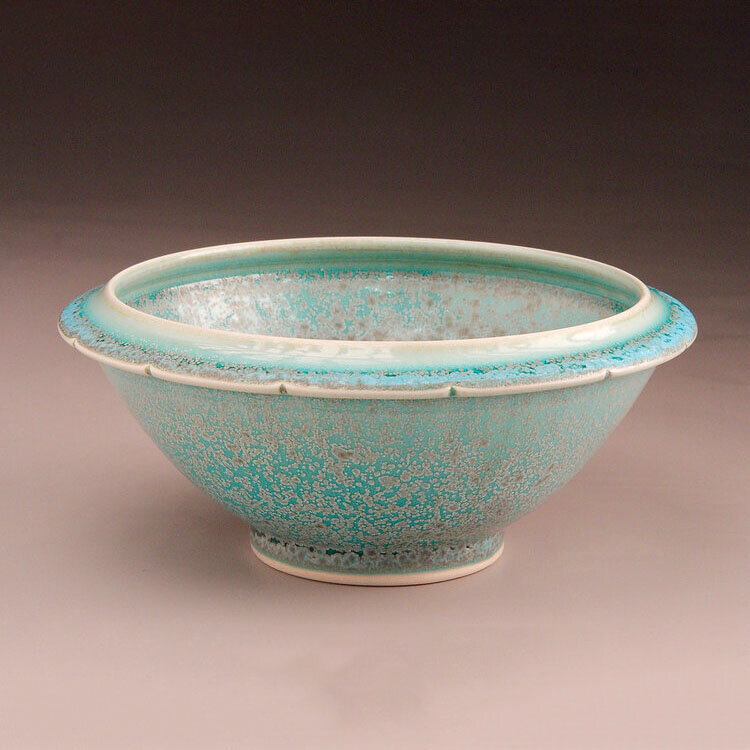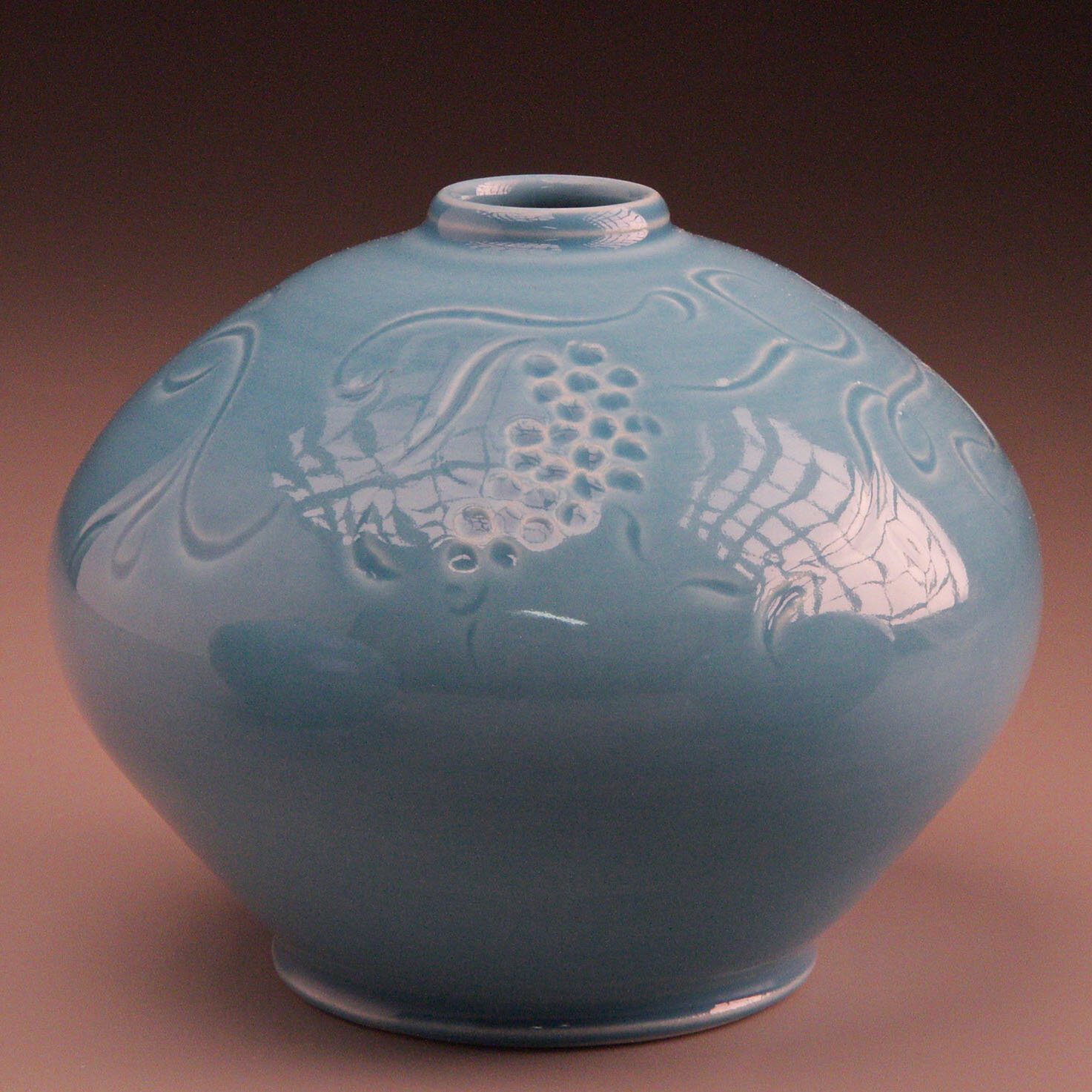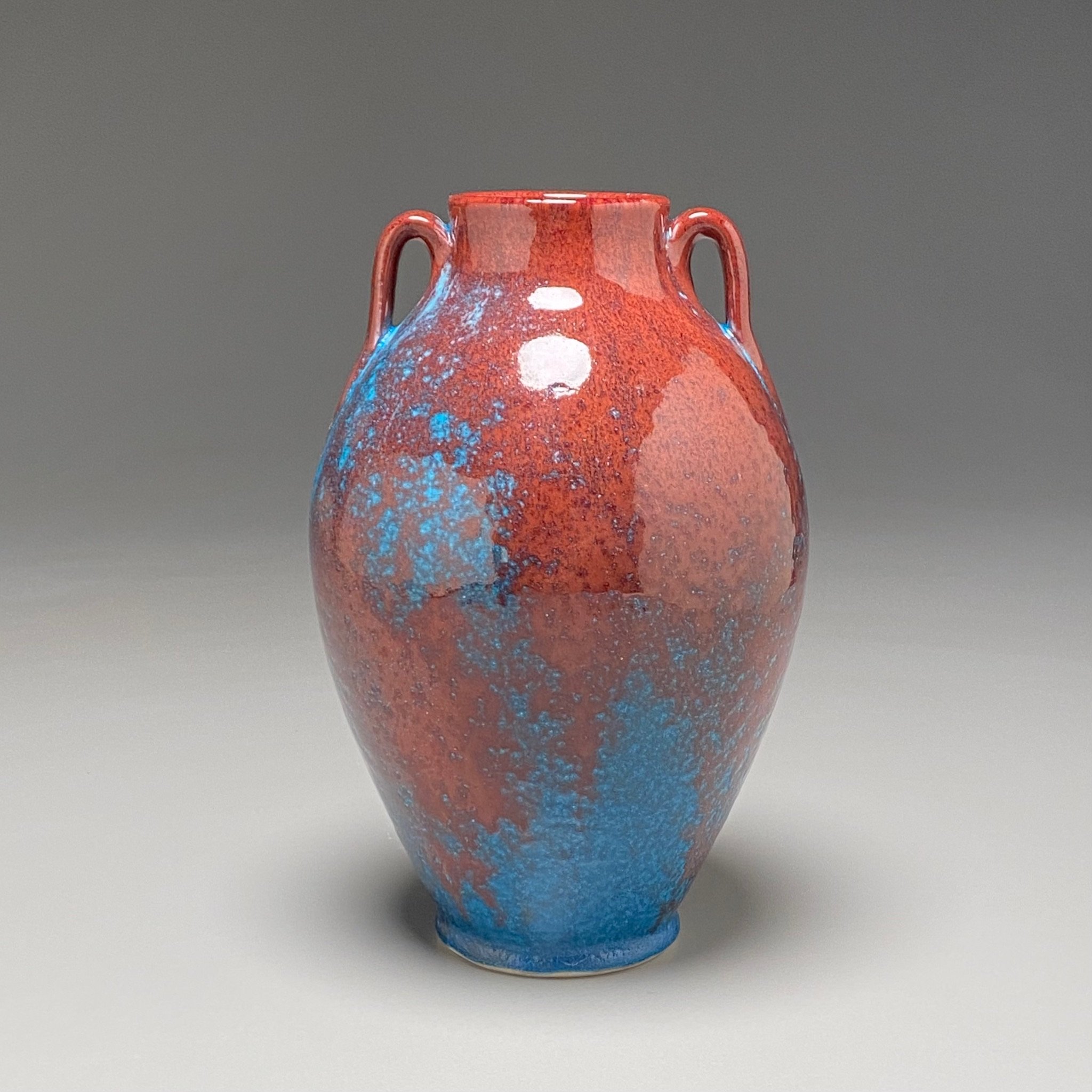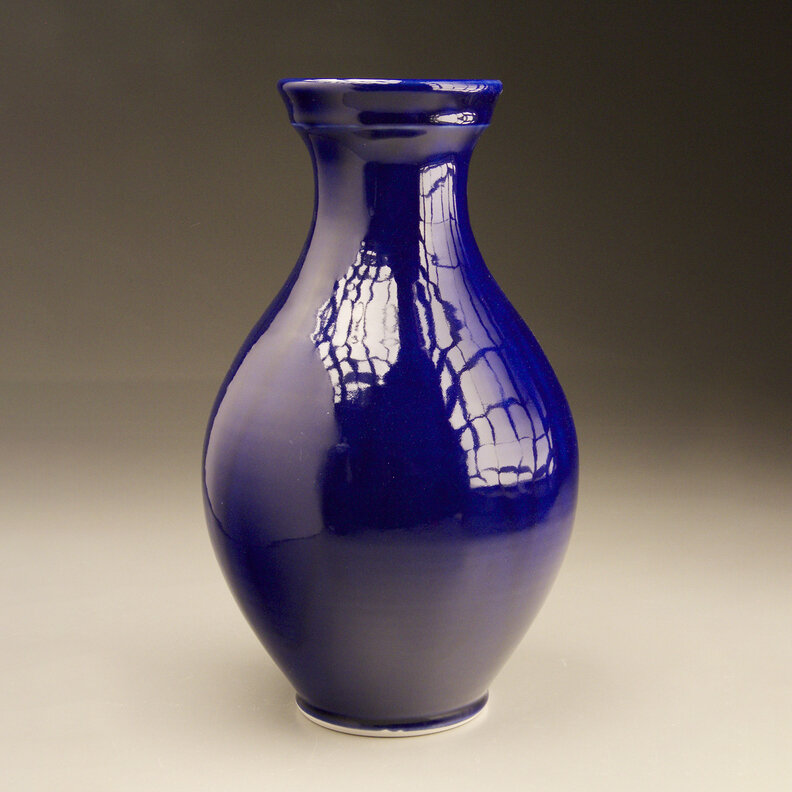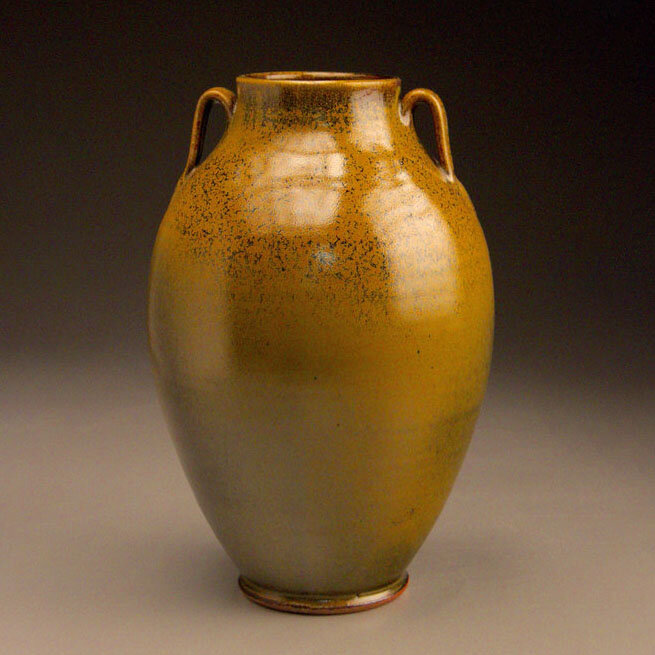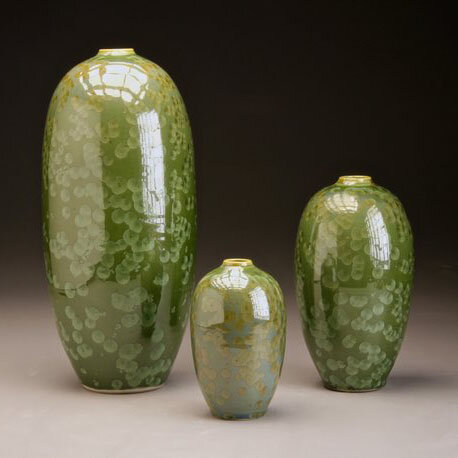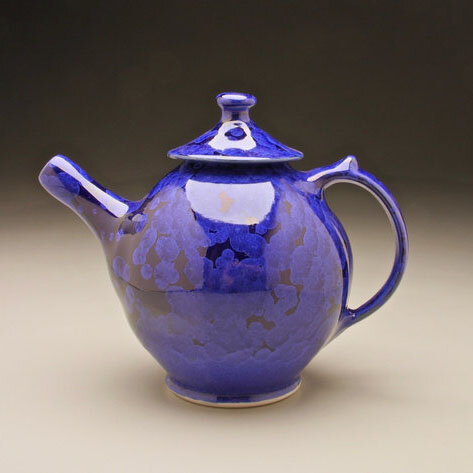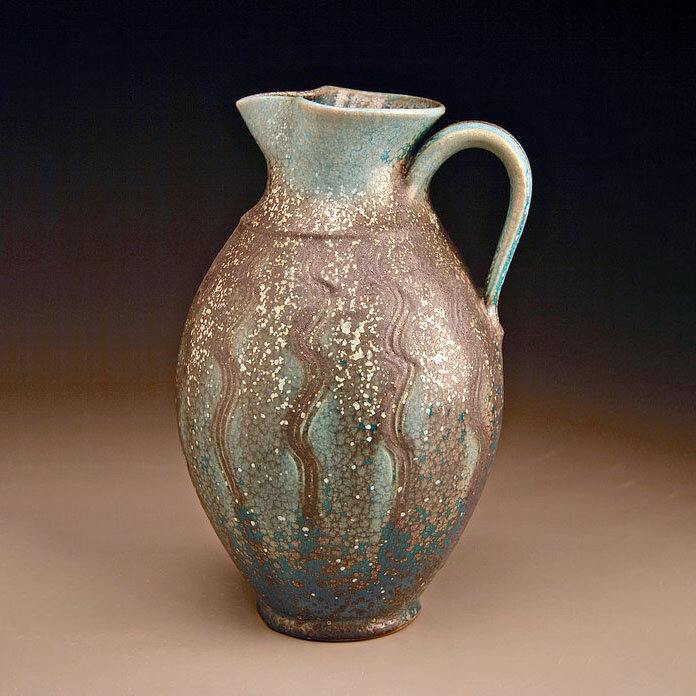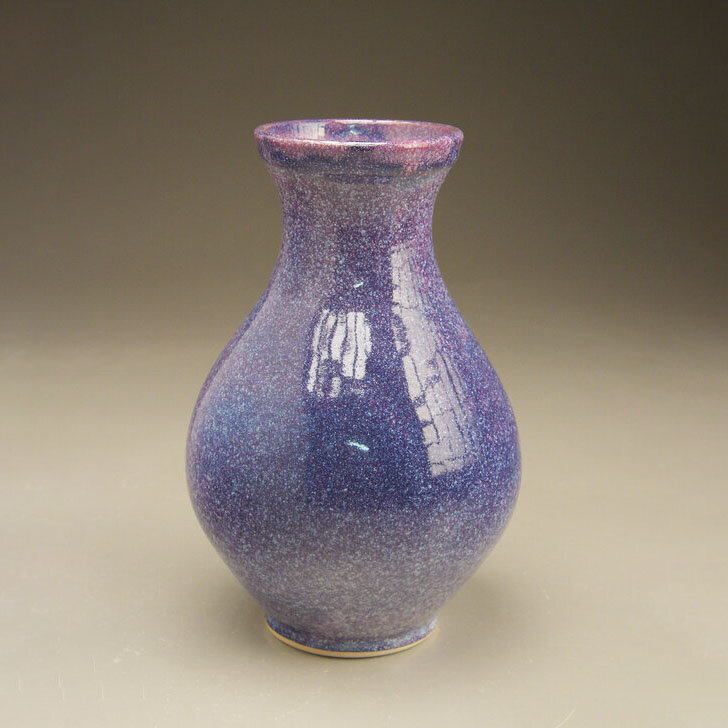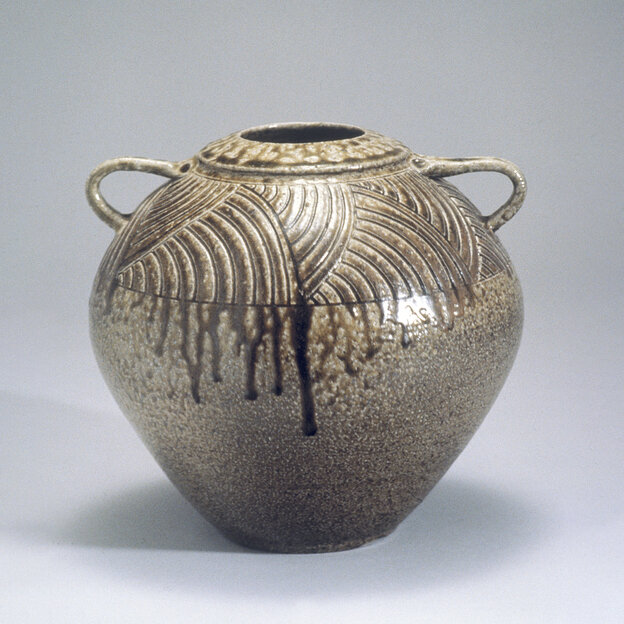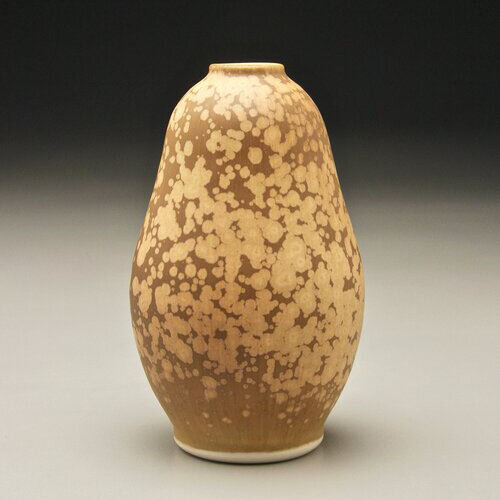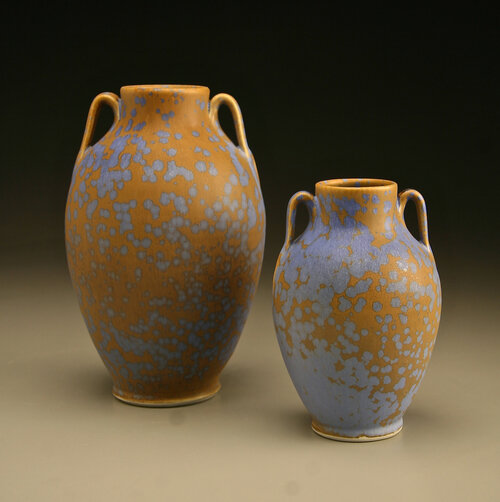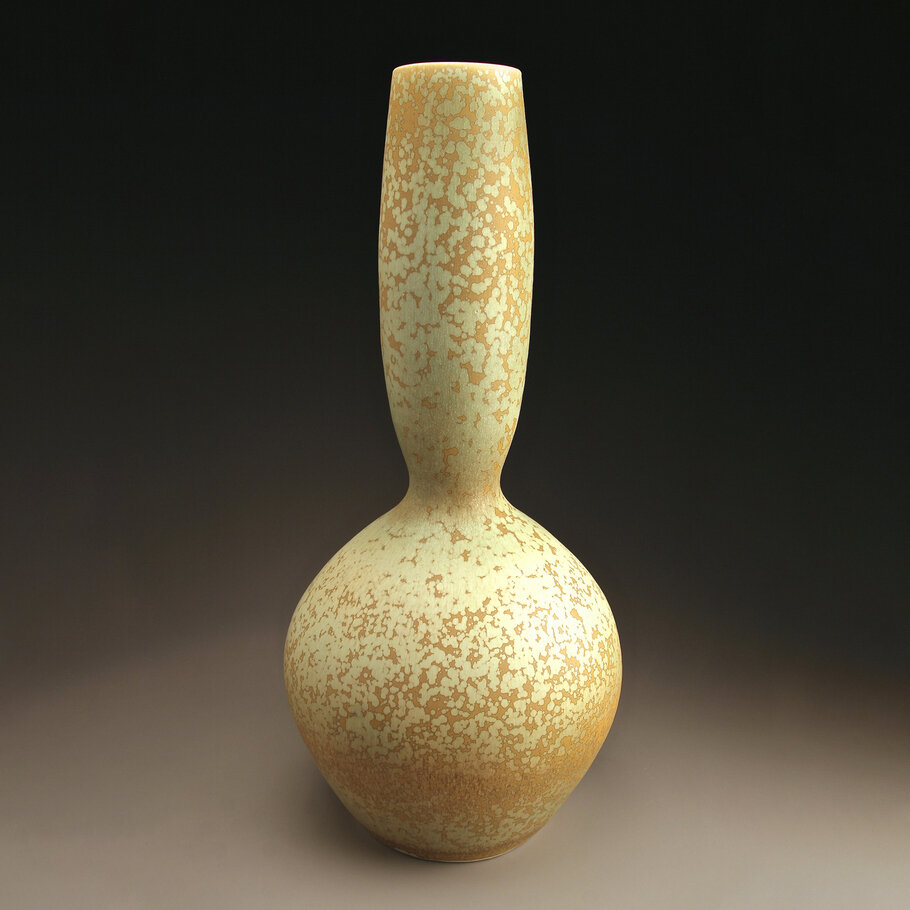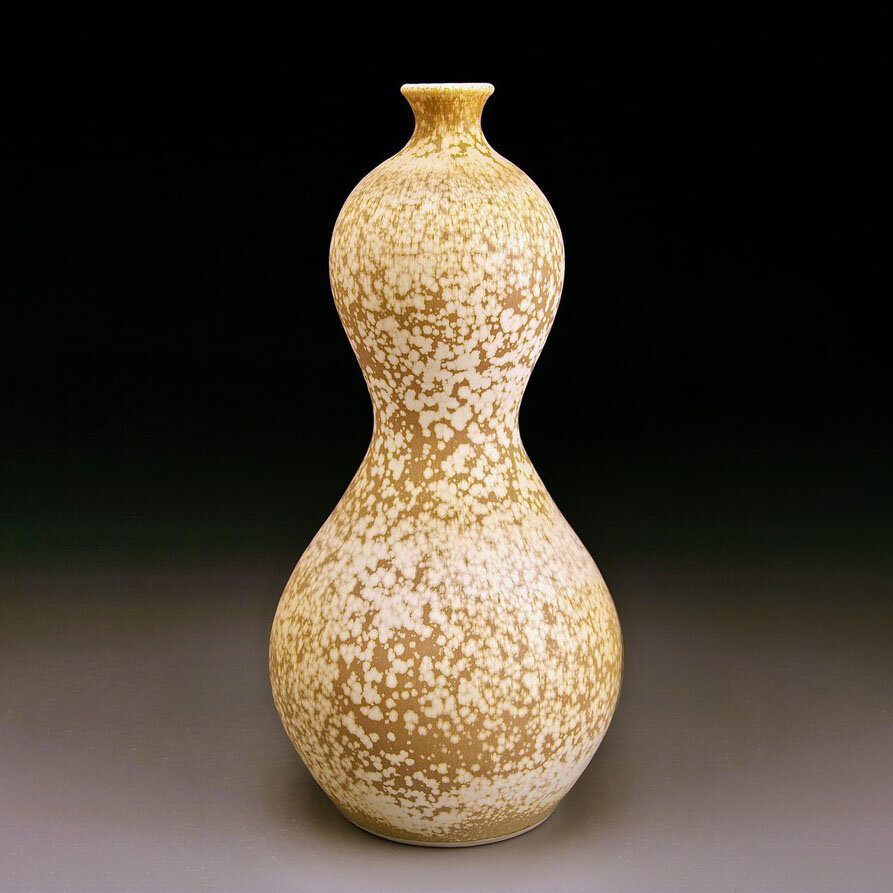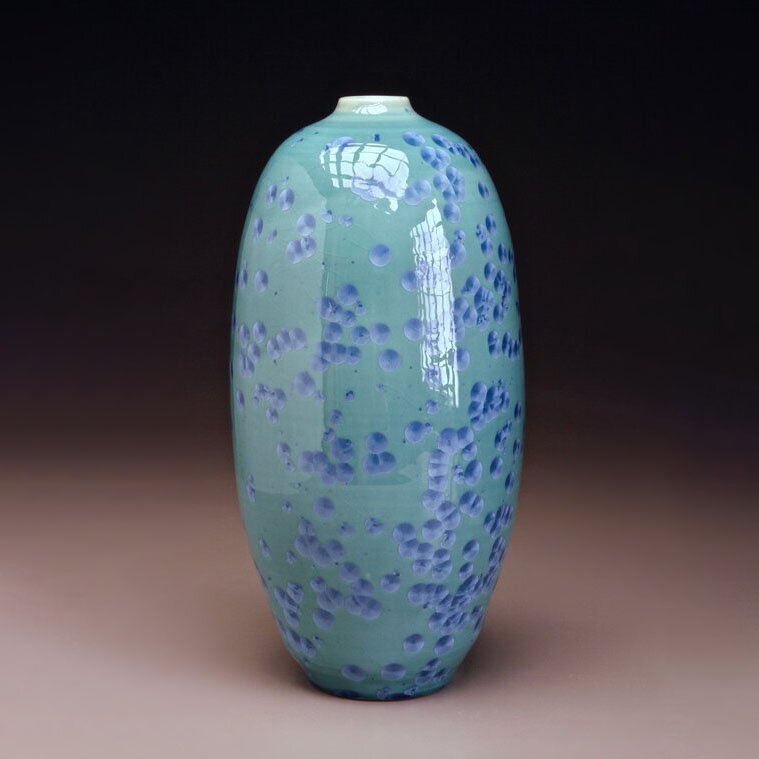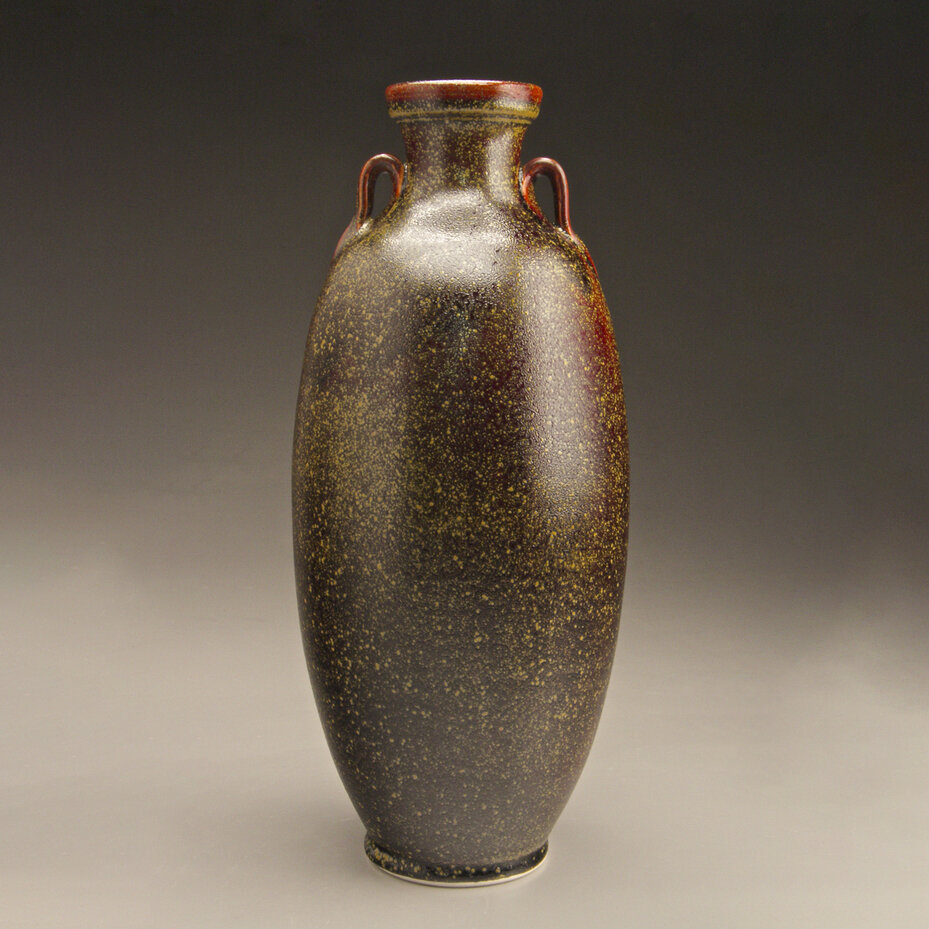Ash Glazes
Ash glazes allow us to “let the kiln be the paintbrush” by relying on the wood-firing process as the glazing agent. Most pieces dedicated to Ash glazing are placed in the kiln with little to no glaze applied to the exterior. During the firing process, the wood is stirred occasionally in the firebox to give flight to the flakes of ash that are produced during the firing. Airborne flakes cling to the exposed areas of the pot and accumulate over time. As the kiln reaches 2300° Fahrenheit, the accumulated ashes begin to melt and form a natural glaze. When the wood-burning kiln is heated to over 2400° Fahrenheit, the wood ash liquefies and runs down the side of the pot like honey.
Ash can also be layered over other glazes. For example, when Ben was in college, he was introduced to a spraying technique using an air-driven spray gun that some potters use to build up layers of glazes on the clay surface. With some experimenting, he was able to create a variety of finishes using accents of 3 to 4 different colors. A glaze made from ash can be used as a top coat to blend or bleach the underlying colors. Some finishes are a base of an iron yellow with cobalt blue or copper green covering. Other colors of orange to silver can develop from the colors overlapping. No two pieces are exactly alike. Ben frequently places these in the wood kiln to accentuate the colors.
*Scroll down to view other examples of works glazed in Ash, as well as a few examples of Ash Glaze applied in layers with other glazes.
*Please Note: The appearance of white spots on the surface is a reflection from photo lighting.

